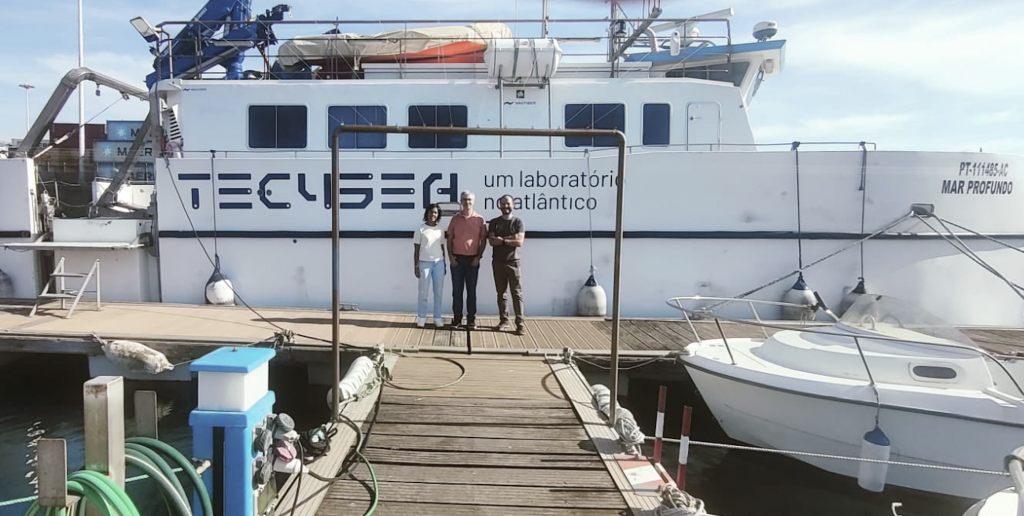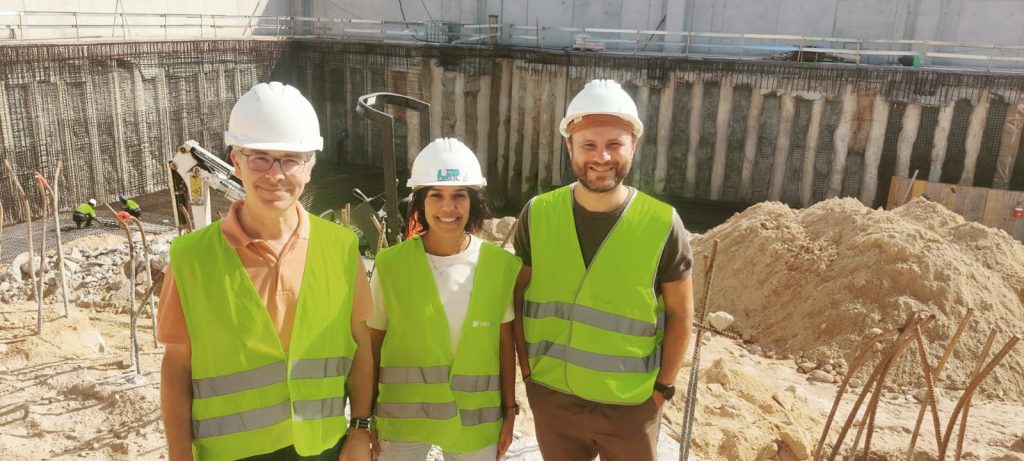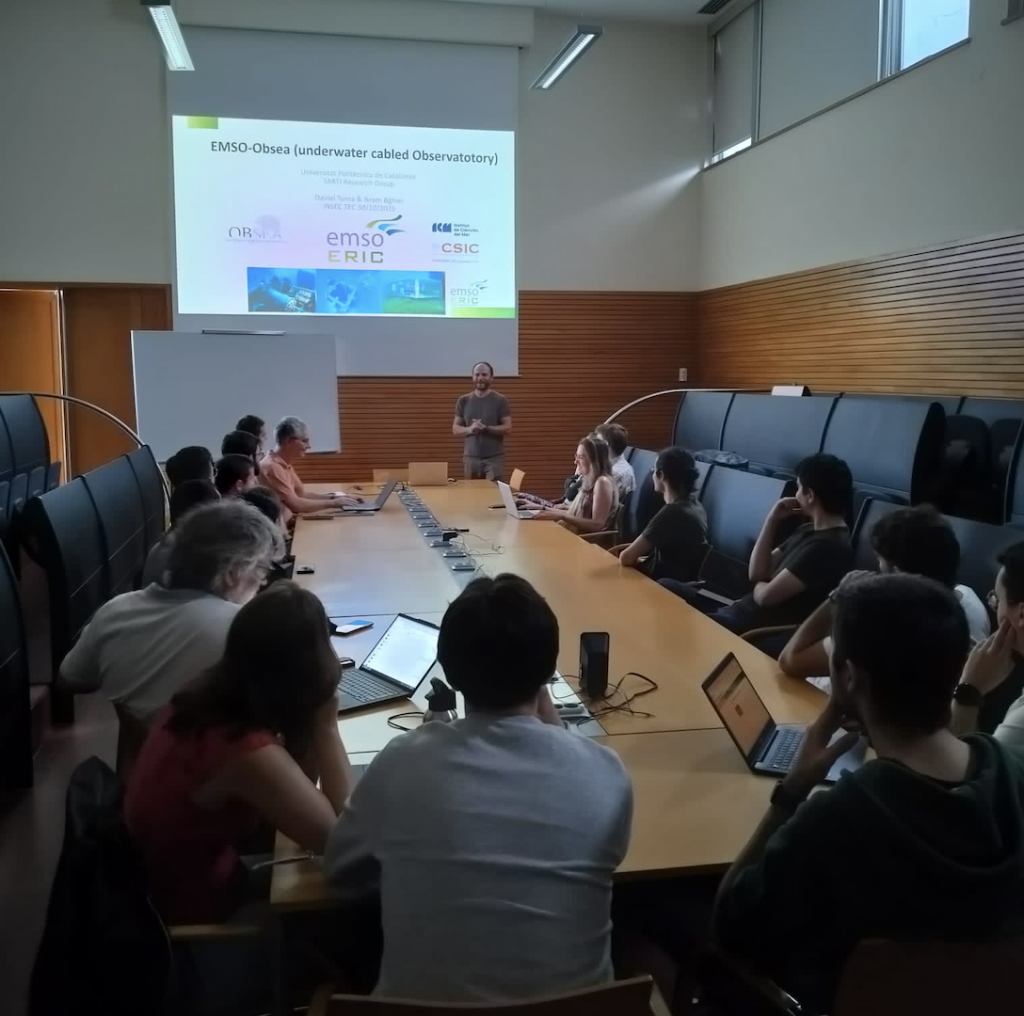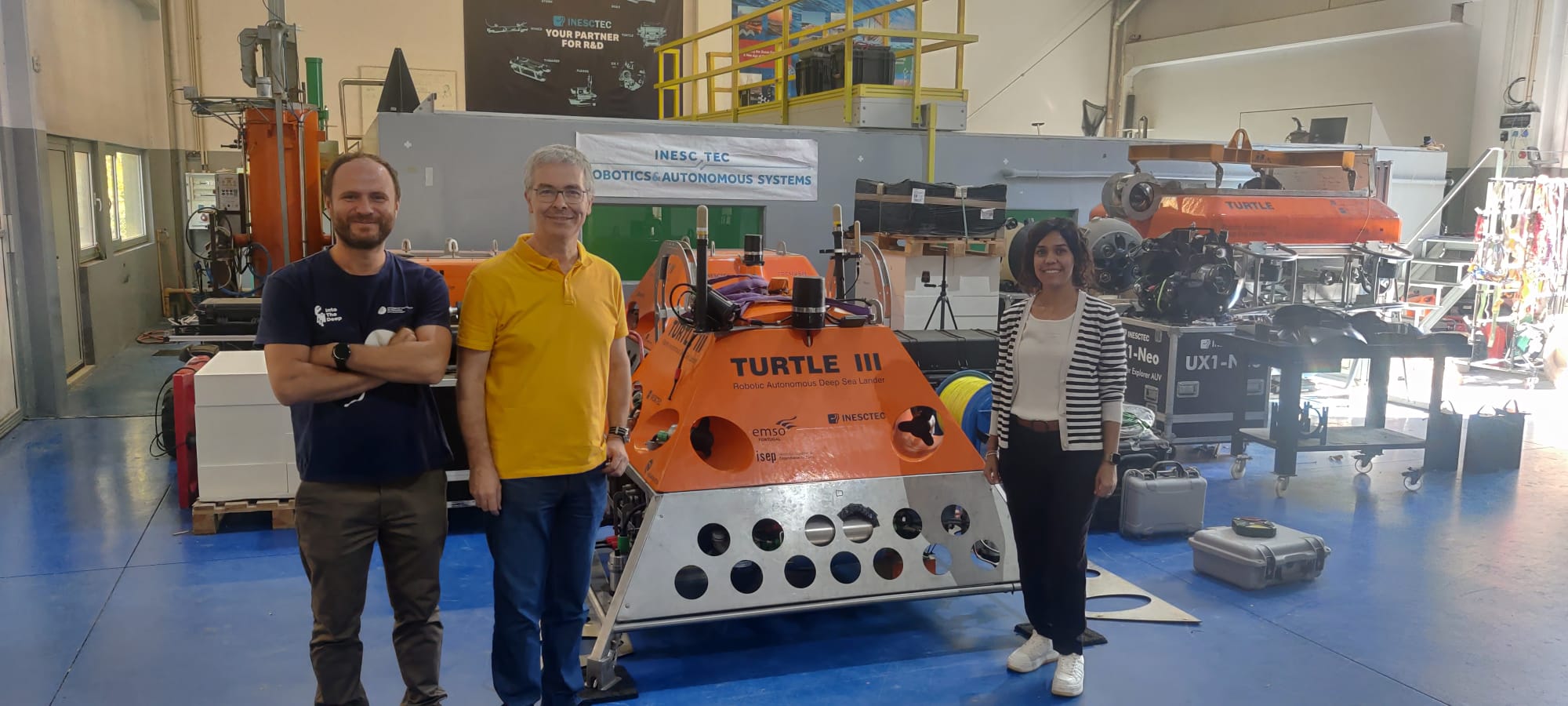The initiative, granted within the EMSO Mobility of Personnel Program, gathered ERIC’s experts from Spain and Portugal to accelerate the development of next-generation deep-sea technologies
From September 30 to October 2, 2025, two staff members from the OBSEA Regional Facility, Universitat Politècnica de Catalunya (UPC), have been granted an award within the EMSO ERIC Mobility of Personnel Program to carry out a staff visit to the Institute for Systems and Computer Engineering, Technology and Science (INESC TEC), a private non-profit research association dedicated to scientific research and technological development and technology transfer.
During the intense 3-day visit, hosted by Prof. Alfredo Martins, Assistant Researcher at the INESC TEC Robotics and Autonomous Systems Centre and EMSO Engineering and Logistics Service Group Leader, Prof. Daniel Toma, Associate Professor and Scientific Coordinator of OBSEA, and Ikram Bghiel, Project Manager and IT Specialist of the Spanish Facility, focused the activities on enhancing collaboration in deep-sea observation technologies between the two institutions. A tour of INESC TEC’s facilities has been organised, including the Institution’s extensive fleet of Autonomous Underwater Vehicle (AUVs), the research vessel, and the ongoing construction of a new research pool.


Building collective capacity through collaboration
A key highlight of the visit has been the discussion on how to harmonise technical solutions across EMSO observatories, with a particular regard for joint development on Resident Robotics for Deep-Sea Observatories, including INESC TEC Turtle robotic platform and OBSEA’s cable crawler, to refine the design of OBSEA’s benthic crawler, a resident robot for seafloor maintenance, diving into key topics, from the deployment strategies to software interoperability and platform coordination. Discussions covered the compatibility of sensing systems (optics, chemistry, biology) and the importance of shared standards in deployment, calibration, and maintenance to improve efficiency and reduce costs.
A significant part of the collaboration centred on innovating biodiversity monitoring, with a focus on integrating ground-breaking sensing and AI techniques into the other EMSO observatory systems, located across Europe. Key areas of interest included:
- AI-based bioacoustics
- AI-based fish detection and classification system
- Sensor fusion of optical, chemical, and acoustic data

A strategic investment in people and progress
The OBSEA–INESC TEC mobility is a clear example of how the Mobility of Personnel programme can promote knowledge sharing, training opportunities, and long-term partnerships across EMSO’s Regional Facilities, ensuring that expertise flows freely between its world-class facilities.
Figures 1-3: Daniel Toma, Alfredo Martins and Ikram Bghiel, during the INESC TEC visit.
Figure 4: OBSEA and INESC TEC teams’ discussion on the technological advancements of the respective Institutions.
Authors: Sara Pero, EMSO ERIC; Ikram Bghiel, OBSEA-UPC


